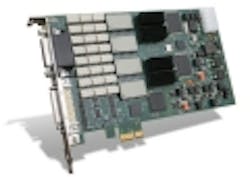Navy shipboard networking builds bridge to future CANES data network consolidation for surface warships
SAN DIEGO, 29 June 2010. U.S. Navy leaders are using the aircraft carrier USS Abraham Lincoln (CVN 72) and its escort ships as a demonstration laboratory of new open-systems shipboard networking technology, and to create a bridge to a new generation of high-performance military data networking aboard the Navy's fleet of warships.
The Lincoln carrier battle group went to sea for tests last January to demonstrate new surface ship networking capability as part of the Integrated Ship Network System (ISNS). This technology ultimately will lead the way to the Navy's newest data networking initiative called Consolidated Afloat Networks and Enterprise Services (CANES).
The challenge Navy officials confront in the ISNS program, as well as in their approach to CANES, is to integrate contemporary open-systems networking in the Navy surface fleet without disrupting the many existing networks on which the Navy relies, explains Dan Phelan, program manager for the Lockheed Martin Technology Center-West in San Diego.
The sea trials aboard the Lincoln battle group last January represented an ISNS early adopters program -- a risk-mitigation effort the navy took to consolidate legacy networks aboard ships. "They design a ship to last 30 to 40 years, but IT [information technology] is added on top of that," Phelan explains. "Each of those networks was brought on individually, and carriers have about 50 networks."
The aim is to move to a common infrastructure and a common interface to take advantage of the latest data networking technology, such as Microsoft, Sun Solaris, and Linux, yet creating a structure independent of proprietary vendor technology that can be upgraded frequently and easily.
"We don't want to be tied to only one architecture or technology description," Phelan explains. "The Navy has to modernize while not breaking these legacy networks." The ISNS program has yielded a common networking infrastructure with modern processing, data storage, and modern software to host the Navy's legacy networks. The Navy also wants to eliminate the use of aging Microsoft Windows NT-based applications aboard ship.
Leading the ISNS program is the Space and Naval Warfare Systems Command in San Diego, with lead contractor Lockheed Martin Maritime Systems segment in Eagan, Minn. Last March the Lockheed Martin Maritime Systems & Sensors (MS2) Tactical Systems in San Diego won a $15 million contract, while the Northrop Grumman Information Systems segment in Reston, Va., won a $17.4 million contract to provide the CANES common computing environment (CCE). The Navy CANES program will have a down-select to one lead contractor in 2011.
CANES, which should be operational by 2014, will take the ISNS project one giant step further by consolidating all Navy shipboard networks. The challenges and risks of achieving that, however, are substantial. "We have to go step-by-step," Phelan says. "They proved they can do something like that on the Lincoln battle group, and this will mitigate the risk for us."
Right now the path forward on Navy shipboard networking is still ISNS, which is the program of record, Phelan says. Plans are in the works, however, to make a seamless transition to CANES. ISNS Increment 1 is also known as CANES Increment Zero, while ISNS Increment 2 will be known as CANES Increment 1, Phelan says.
Follow me on TwitterJoin the PennWell Aerospace and Defense Media Group on Linkedin at http://bit.ly/9MXl9
Become a fan of Military & Aerospace Electronics on Facebook at http://bit.ly/1VGM0Q
Post your aerospace and defense-related material to the #milaero community on Twitter. Use the #milaero hashtag.
Join your industry colleagues in the Command Post community online at http://community.milaero.com
